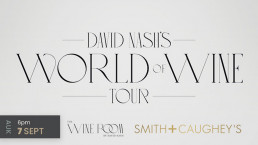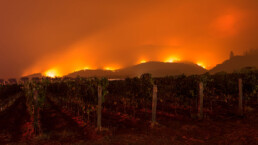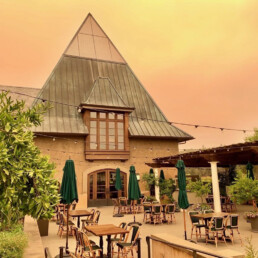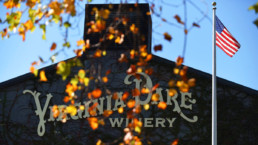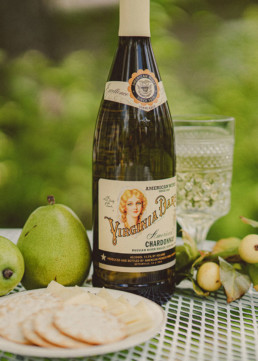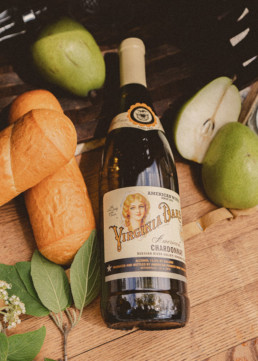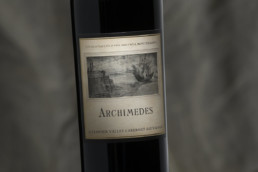David Nash's World of Wine Tour @ The Wine Room, Smith & Caughey's
A Hosted Tour of The Great Wine Regions of The World.
Join fine wine curator and master storyteller David Nash, alongside regional experts as they take you on a world tour from Champagne to Tuscany to Napa all from the comfort of The Wine Room at Smith & Caughey's Auckland.
Taste regional benchmarks, learn from the experts and take advantage of special offers on the night exclusively for ticket holders, including 10% off wines purchased during the event (while stocks last, please note Champagne and Spirits are excluded from the discount, unless otherwise stated.).
Join the standing, free-flowing event at The Wine Room by David Nash, with canapés to match.
• Champagne by Veuve Clicqout
• French wines from Burgundy to Bordeaux with specialist, Alex Hoinville
• Italian wine ambassador, Marco Nordio shares his favourite wines
• and our own Melissa Csigay, with iconic Californian pours including:
- Francis Ford Coppola Diamond Collection Zinfandel
- Cristom Vineyards Willamette Valley Pinot Noir
- Duckhorn Vineyards Napa Valley Merlot
- Stag's Leap Wine Cellars Karia Chardonnay
- Stag's Leap Wine Cellars Hands of Time
Register today: Eventbrite
$99 per person
Thursday 6pm, 19 October 2023
The Wine Room by David Nash is located at Smith & Caughey's, Queen Street, Level 2.
A strictly R18+ event. Please drink responsibly.
Wave the Flag - it's the 4th of July
Wave the Flag - it's the 4th of July
12 Star-Spangled Awesome American Wines for Independence Day

It’s the 4th of July just around the corner — yessiree, Happy Birthday, America! — so what better way to celebrate than with a few fabulicious American wines.
Proudly, right from our earliest days, Dhall & Nash understood the bounty and calibre of American wines. We were amongst the first in NZ to hitch our wagon to the vinous rockstars of USA.
Our super selection from the great states of California, Oregon, and Washington is now considered to be as jaw-dropping as any 4th July fireworks display.
And what better way to celebrate with a full stars and stripes experience, than to team these wondrous wines with some All-American recipes for you’all to chow down for your Independence Day blow-out bashes.
Arguably the most famous 4th of July food tradition is the all-American barbecue, which brings many American families and friends together around a grill, not too dissimilar to our Kiwi Barbie!
When we think of the perfect 4th of July menu, there’s a few things that come to mind. You’ve gotta have the classics, like burgers and hot dogs, ribs, and potato salads, of course, but let’s do a little kiwi-Americana mash-up to add some pizazz to your festive BBQ menu. Here’s some Dhall & Nash Independence Day inspiration! Have fun!
We hope there’s something in our selection that’s tickled your tastebuds… if not search through our extensive wine catalogue for your perfect American wine – red, white, and blue-chip.
Cheeky Disclaimer – our D&N food and wine pairing “truth” is, you can eat pretty much whatever you want while drinking whichever wine you choose. So here’s some of our suggestions – but you go for it whichever way you darn well want!
Chili Dogs
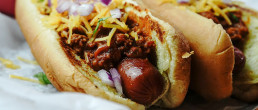
- 1 Can of Whole Tomatoes,
- 1 tbsp. Chili Powder,
- 2 tsp. Ground Cumin,
- 1 medium Red Onion (finely chopped),
- 4 Tbsp Tomato Paste,
- Black Pepper & Salt to taste
- 500g. Ground Mince
- 4 Hot Dogs
- 4 Hot Dog Buns
- 1 cup. Grated Sharp Cheddar,
- 4 Good quality Pickles
Place the tomatoes, paste and their juices in a large casserole pot or slow cooker, breaking them up as you add them. Stir in the chili powder, cumin, all but 3 tablespoons of onion, and 1/2 teaspoon pepper; keep the remaining red onion for the top of hot dogs at the end.
Add the beef, break it up and stir to combine. Cook, covered, until the meat is cooked through, and liquid begins to reduce, about an hour (Or longer if you want a thicker sauce).
Fifteen minutes before serving, add the hot dogs to the top of the slow cooked mince and simmer, covered, until heated through. Divide the hot dogs among the buns and top with the chili, Cheddar, and remaining chopped onion. Serve with pickles, if desired.
First up to bat is the quintessential American Chilli Dog. We’ve paired this family fave with a Washington State dark-fruited Syrah. Equally as scrumptious, try this Hot dawg with the Cali classic Petite Sirah. It’s hard to beat California when it comes to PS that’s dangerously drinkable like this! Both these wines have flavours enhanced by bold spices like chili pepper, cumin, and rich tomato.
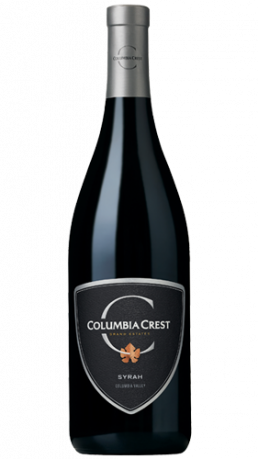
Columbia Crest Syrah 2019
“The aromas are unmistakably Syrah, with notes of plum and smoked meat. Plump, very primary fruit flavors follow, with a creamy feel from the barrel. It’s tasty and a good value to boot.”
89/100 points – Wine Enthusiast
“Good typicality – violet and blackberry with plush notes. Nice expression of Syrah layered and structured tannins. On the sweet side but packed full of fruit and spice. Well made, very commercial and good value”
16/20 points – Jancis Robinson.com
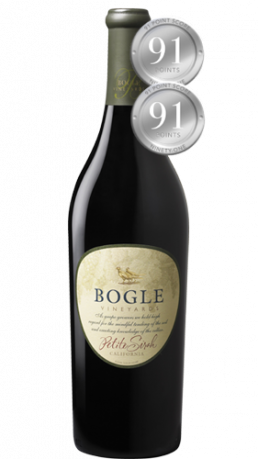
Bogle Petite Sirah 2018
Although everyone adores Bogle Chardy, their reds are awesome too! But don’t confuse this with Syrah; although they are related, genetically being a cross between Syrah & Peloursin – and btw it also goes by the name “Durif” in France.
“As deep as black hair dye in colour. Sweet clove spice on the nose. Very ripe fruit, but it doesn’t meld with the oak particularly well. Long, sweet-fruited finish. Not without a certain charm, but in a very loud-mouthed way.”
16/20 points – JancisRobinson.com
“Delicious blackberry, blueberry and dark-chocolate flavors are wrapped in thick but soft tannins. This is a full-bodied wine, with a mouthcoating texture.”
91/100 points – Wine Enthusiast
Buffalo Wings
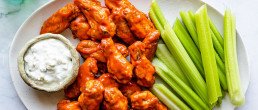
- 1kg chicken nibbles
- 3 Tbsp butter, melted
- 4 Tbsp your favourite Hot Sauce
- 1 Tbsp paprika (smoked is best)
- 3 Tbsp brown sugar
- 1/2 teaspoon salt
- 1/4 teaspoon black pepper
Marinate the chicken nibbles for 30mins and either bake in the oven or BBQ. Be sure to reserve some of the marinade to baste the chicken. Pair these with Blue Cheese Dip.
Hot tip – how to make ultra-crispy Buffalo Wings in the Oven… Here’s 2 cheeky secrets to follow:
- Baking powder (believe it or not – yes!) – pat dry your wings, then toss the wings in baking powder which draws moisture to the surface of the skin and helps make it crispy; and
- bake on low then high – usually, the fat under the skin is part of the reason why baked wings don’t get really crispy. So, the secret is to start at a low temp first which melts the fat under the skin, then crank up the oven at the end which makes the skin super crispy!
- Blue Cheese Dip
- 1/2 cup sour cream
- 1/2 cup crumbled blue cheese
- 1/2 cup mayonnaise
- 1 Tbsp white wine vinegar
- 1 clove garlic, mince
Blend all the ingredients and scrape into a serving bowl.
To serve – arrange the wings on a platter, add a side of the dip and serve with CELERY sticks – yes, it’s like the perfect way to reboot your taste buds in between each wing!! And remember, plenty of paper towels for sticky fingers.
The conventional wisdom is that Pinot Noir pairs best with duck or mushrooms, but this grape is surprisingly versatile and will match a big range of different foods. Hence, we decided these two pinots will rock with old fashioned Buffalo Wings – who doesn’t love ’em. Even though they’re just kind of messy to eat, they’re totally worth it 
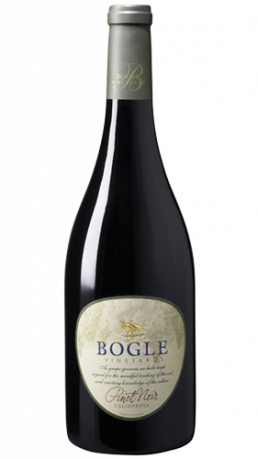
Bogle Pinot Noir 2020
On the 2019 vintage: “Rich black-fruit notes fill the aromas and flavors of this saturated and full-bodied wine. Gorgeous black cherry and blueberry flavors are wrapped in fine-grained tannins for a mouth filling effect.”
91/100 points – Wine Enthusiast
Voted #6 TOP 100 BEST BUY of 2021 Wine Enthusiast Magazine
“Heady scents of ripe summer strawberries make a lovely first impression, while hints of crushed violets and sweet dried herbs resonate on the nose. Refined and nuanced, the mouthfeel softens as layers of cherry fruit are wrapped in a comforting blanket of pipe tobacco and worn leather. The firm, yet lingering finish is perfectly balanced with touches of baking spices, fragrant fruit, and earth tones.” – Winery Notes (This is an elegant, classic Pinot Noir at an extremely wallet friendly price!).
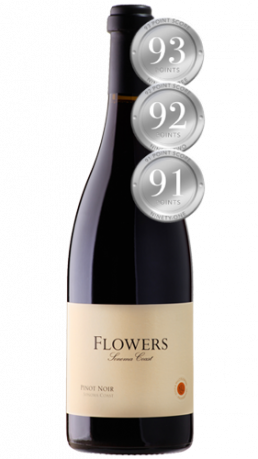
Flowers Sonoma Coast Pinot Noir 2019
“The 2019 Pinot Noir Sonoma Coast is deeper ruby-hued and has pure, classic, textbook notes of ripe cherries, raspberries, spring flowers, and underbrush. The balance is spot on, it has ripe, present tannins, good freshness, and a great finish.”
93/100 points – Jeb Dunnuck
Cheesy Cornbread
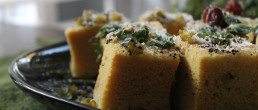
- 1 Cup yellow cornmeal (instant polenta ok)
- 1 Cup all-purpose flour
- 4 Tbsp sugar
- 4 tsp baking powder
- ½ tsp chilli powder
- ½ tsp salt
- 1 Cup milk or plain yoghurt
- 1 large egg
- 1/3 Cup canned roasted red peppers, drained & chopped
- 1 Cup grated cheese
- ¼ Cup finely chopped fresh parsley
- ¼ Cup cooking oil
Preheat the oven to 200 Celsius and coat the inside of a 14x21cm loaf pan, large muffin tins, or a traditional cast iron skillet with non-stick spray (or butter for more flavour).
In a large bowl, stir together the cornmeal, flour, sugar, baking powder, and salt until evenly combined. In a separate bowl, whisk together the milk, egg, cheese, roasted red peppers, and oil.
Pour the bowl of wet ingredients into the bowl of dry ingredients and stir just until everything is moist. Avoid over stirring. It’s okay if there are a few lumps.
Pour the batter into the prepared loaf pan and bake for about 20 minutes, or until the top and edges are golden brown. Serve warm with lashings of butter.
Another perennial American rock star has to be Californian Chardonnay. The cosy and buttery flavours in cornbread mirror those in creamy oaked chardonnay for a match made in wine-and-food heaven.
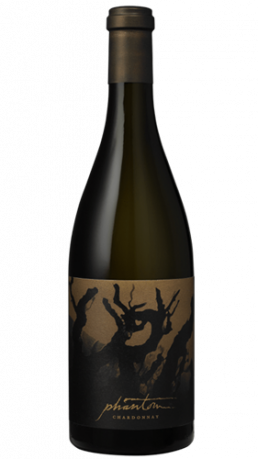
Bogle Phantom Chardonnay 2019
“…entices with its rich layers. Green apple and pear transform into spicy flavors of freshly baked apple pie, while barrel fermentation imparts a creamy, luscious mouthfeel. French oak whispers sweet notes of vanilla and melted caramel.”
92/100 points & Gold Medal awarded – Sunset International Wine Competition 2021
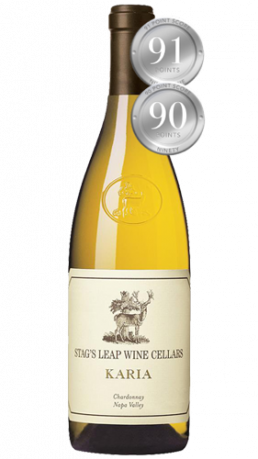
Stag’s Leap Karia Chardonnay 2018
“This is an opulent, structured, and mineral-driven white wine, richly layered and robustly built with weight and ample body. Brioche, honeycomb, and baked apple meet a complement of fresh acidity and a lasting note of stone.”
91/100 points – Wine Enthusiast
“The 2018 Chardonnay Karia comes from a selection from throughout the valley and offers a light gold color as well as a rich, well oaked, buttery style that includes attractive orchard fruits, white flowers, vanilla, and spice-driven aromas and flavors. It has good acidity as well and is balanced and medium-bodied, all making for a certainly delicious Chardonnay geared for near-term drinking.”
90/100 points – Jeb Dunnuck
Cowboy Beans
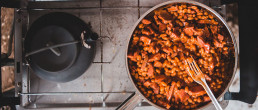
- 4 cans of Pinto beans, (or a mix of Red kidney, Black Beans or White beans – drained of liquid)
- 1 tablespoon bacon fat
- 1 tablespoon vegetable oil
- 1 medium yellow onion, chopped
- 5 cloves garlic, minced
- 1 smoked ham hock
- 2 cups water
- Salt, to taste
- 2 cups brewed coffee
- 1 1/2 cups tomato-based barbecue sauce
- 1/4 cup chopped pickled jalapenos for garnish
- Grated cheddar or similar cheese for garnish, optional
- 1/4 cup chopped red onion for garnish
Heat the bacon fat and the vegetable oil in a Dutch oven or other heavy-bottomed lidded pot over medium-high heat.
Add the onion and sauté for 3 minutes, stirring often, until translucent and just beginning to brown.
Add the garlic and sauté for another 1 to 2 minutes.
Place the drained beans into the pot with the onions. Add the ham hock, the water, a little salt, and the coffee. Stir and bring to a simmer. Cook for about 1 hour. The beans should be soft enough to chew but not mushy soft.
Add the barbecue sauce and stir to combine. Cover and simmer on low heat until the meat from the ham hock begins to separate from the bone.
After an hour, check on the beans every 15 minutes. If the beans begin to break down, remove from heat. When the beans are done cooking, pull out the ham hock and strip the meat from the bone. Add the meat to the beans and discard the bone.
Add salt to taste. Add pickled jalapeños to taste for some heat, if desired. Serve with a little grated cheese and chopped red onion on top.
We’re going from the sublime to the ridiculous in this match up… the very classy super-smooth Duckhorn Three Palms Merlot juxtaposed against the very humble Cowboy Beans dish. But Merlot is a bit of a chameleon and because of this it is an easy match with a wide range of foods. Its dry, natural acidity combined with ripe red fruit flavours and leafy aromas make it an ideal pairing for full flavoured dishes. Not to mention silky tannins and a soft smooth finish make this bad boy combo a taste sensation.
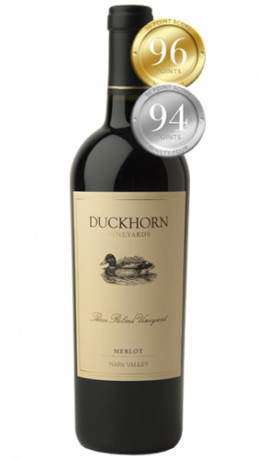
Duckhorn Three Palms Merlot (Napa Valley) 2018
“Elegantly structured and featuring concentrated cherry tart and raspberry pastry flavors that are loaded with toasty richness. Creamy and spice-filled finish is backed by firm acidity and tannins”
94/100 points – Wine Spectator
As a testament to its status as the benchmark for New World Merlot, in 2017, the Wine Spectator honoured the 2014 Three Palms Vineyard Merlot as “Wine of the Year.”
“The Cathedral of Merlots, with imposing structure and a towering presence – a sheer joy to drink. Drinking Window 2021 – 2035”
96/100 points – Decanter
Once again, the famed Three Palms Vineyard has yielded a fascinating and luxuriously full-bodied Merlot. Aromas of huckleberry, black cherry, chocolate, and fig rise from the glass, followed by hints of graphite, graham cracker, bay leaf and sage. On the mouth-watering palate the flavors are intense and complex, with velvety tannins and voluptuous fruit balanced by earthy undertones and Three Palms’ classic minerality, all of which carry the wine to a rich and remarkably long finish. Blend: 89% Merlot, 7% Cabernet Sauvignon, 3% Cabernet Franc, 0.5% Petit Verdot, 0.5% Malbec (Winery notes)
There’s a Secret Ingredient in Cowboy Beans. Its Coffee! Legend has it that back in the day, cowboys added leftover coffee to their pot of beans because fresh water was not so easy to come by—a cowboy version of waste not, want not. Coffee adds a depth of flavour and a slight bitterness that keeps the sweet-spicy of the barbecue sauce in line.
Two-Step Texan Ribs
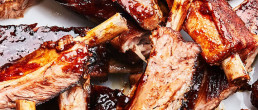
- 1 Tbsp onion powder
- 1 tsp smoked paprika
- 1 tsp ground cumin
- 1 tsp celery salt
- 1/2 tsp black pepper
- 1 Tbsp brown sugar
- 2 Kgs pork baby back ribs
- 1 Cup of your favourite barbecue sauce
Preheat oven to 200 degrees C
In a small bowl, combine paprika, onion powder, cumin, celery salt, pepper, and brown sugar; rub seasoning mixture over ribs. Place each rack of ribs on a large piece of aluminium foil. Wrap foil securely, leaving room for steam to circulate, seal edges tightly. Place foil packets on a baking sheet.
Bake 2 hours, or until meat is fork-tender. Open packets carefully, as steam may be released. Brush ribs with barbecue sauce and place back in oven 15 to 20 minutes, uncovered, or until sauce starts to caramelize.
Zinfandel wine is happiest when paired with anything from the meat aisle, from barbeque pork ribs, leg of lamb or a big, hearty meal. And it loooves spice! Here’s our D&N team favourite:
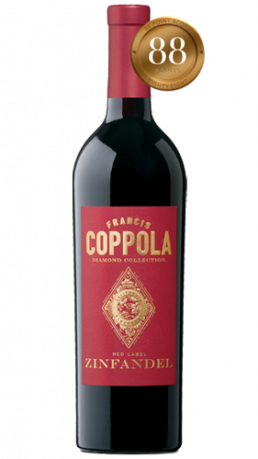
Francis Ford Coppola Diamond Collection Zinfandel 2018
The bouquet reveals lush aromas of freshly picked blackberries, raspberries, and a hint of star anise. The palate is pampered by juicy plums, black cherries and freshly ground white pepper. Sourced from old vines in Amador County and cooler sites in Paso Robles and Sonoma, this wine comprises approx.90% Zinfandel with 10% Petite Sirah and was matured 10 months in French oak. The Petite Sirah further enhances the luscious strawberry jam, cassis and briar flavours that follow its perfume of dark fruit, sweet spice, and toasty vanilla. (Winery notes)
Slow Cooker Beef Brisket
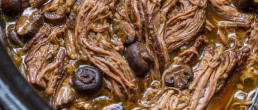
- 3 Tbsp Olive oil to sauté, divided
- 2 kgs beef brisket
- 2 tsp salt and 1 tsp black pepper, or to taste
- 2 medium yellow onions, sliced into thick strips
- 500g mushrooms, thickly sliced (leave some whole if you prefer)
- 6 medium garlic cloves, peeled and chopped (not pressed) *
- 2 cups chicken or beef broth/stock (or for fun an American-style pale ale)
- 2 1/2 Tbsp Worcestershire sauce
Generously season brisket with about 2 tsp salt and 1 tsp black pepper. Heat a large heavy skillet or cast-iron pan over high heat. Add 1 Tbsp olive oil and when hot, add brisket (fat side down). Sear 4-5 minutes per side or until browned on both sides. Transfer to slow cooker with the fat side facing up.
In the same pan, add 1 Tbsp olive oil and sliced onions. Sautee 5-7 minutes or until onions are caramelized. Place onions over brisket. In the same pan, add more oil as needed and sauté mushrooms until softened (5 min). Place mushrooms into the slow cooker. Sprinkle chopped garlic over the mushrooms. Combine 2 cups chicken broth with 2 1/2 Tbsp Worcestershire sauce and pour mixture over the meat.
Cover and cook on low 7 to 8 hours or until cooked through and easy to pull apart with forks. Turn off slow cooker and rest for 15 minutes with the lid on. Remove and discard excess fat from the top then pull the beef apart with forks and keep it in the slow cooker to soak up the juices which will add incredible flavor and keep the meat tender. Serve beef brisket and mushrooms, spooning the slow cooker brisket juices over the top.
***Cheeky trick to use the Beef Brisket as a burger filling – finish it off on the BBQ! When the brisket is tender but before the pull-apart stage, remove from the roasting pan or casserole. Oil the already medium hot BBQ grill. Place beef on the grill and brown on both sides. Baste the beef generously with BBQ Sauce turning and basting both sides. Continue to do this until there is a nice, caramelised glaze on the brisket. You can then serve inside a burger bun with all the fixings & with extra BBQ sauce on the side. Boom! Multi-purpose brisket – yummo!
American Cabernet Sauvignon is a food-world favourite, and it’s easy to see why. Its tannic structure, coupled with its red- and black-fruit flavours compliment hearty dishes perfectly.

Spottswoode Lydenhurst Cabernet Sauvignon 2018
“A wine well worth purchasing and cellaring, the 2018 Cabernet Sauvignon Lyndenhurst sports a dense purple hue as well as classic Cabernet notes of blackcurrants, Asian spices, violets, licorice, and tobacco. Beautifully rich, full-bodied, and concentrated, it’s one heck of a second wine that can be drunk today or cellared for 15-20 years.”
94/100 points – Jeb Dunnuck
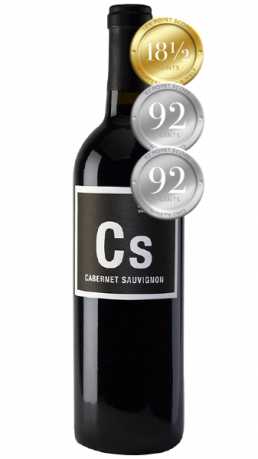
Wines of Substance Cabernet Sauvignon 2019
“Juicy blue fruits, leafy tobacco, violets, and orange blossom notes all emerge from the 2019 Cabernet Sauvignon Cs and it’s medium to full-bodied, has a beautifully balanced, fruit-forward style, no hard edges, and a great finish. It’s no simple fruit bomb and has notable structure, ripe tannins, and outstanding length. It reminds me of a top Cru Bourgeois from Bordeaux and represents a stunning value. Drink it over the coming 7-8 years.”
92/100 points – Jeb Dunnuck
“Currants, flowers, and walnuts on the nose. Medium-bodied with a pretty core of fruit and fine tannins and a crisp finish. Lead pencil. Fresh. Compact. Delicate and delicious. Enjoy.”
92/100 points – James Suckling
Mac-n-Cheese
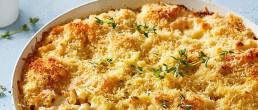
- 125 g Bacon, thick cut pieces rindless
- 2 cups Macaroni (Elbow or any short pasta)
- 50g Butter
- 3 Tbsp Flour
- 3 cups Milk
- ½ cup Cream
- 1 cup any tasty cheese, like gruyere, cheddar, etc. grated, plus 1/2 cup extra for topping
- ½ cup Breadcrumbs, white or panko
Heat the oven to 200C. Lightly grease a medium-sized oven-proof dish.
Lightly pan fry bacon pieces and set aside.
Cook the macaroni elbows in lightly salted boiling water according to the instructions on the packet, or until al dente. Drain and rinse under cold water to arrest the cooking and set aside.
In a medium-sized saucepan, melt the butter over a low heat. Stir in the flour to form a roux. Allow roux to bubble gently, stirring continuously until lightly golden. Remove from the heat, add milk and cream to the roux, and stir or whisk until well combined.
Return to the heat and stir continuously until the sauce is shiny and thick enough to coat the back of the wooden spoon. Remove from the heat, add the grated cheese and bacon lardons.
Stir cooked macaroni elbows through the sauce and season to taste with salt. Spoon into the dish.
Mix together the breadcrumbs and extra grated cheese and sprinkle over the macaroni cheese.
Place in the oven and cook for 15-20 minutes until golden and bubbling.
Actually, here in Godzone now, it’s too darn cold for the American 4th July classic Potato Salad or Coleslaw so we’re subbing in the all-time American fave Mac-n-Cheese. Easy to match with either a chardy or a warming red.
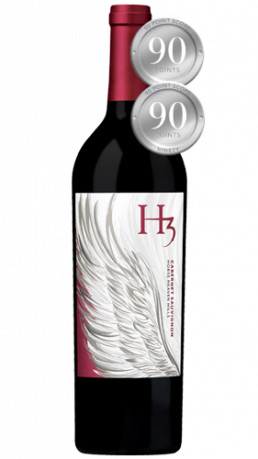
H3 Horse Heaven Hills Cabernet Sauvignon 2019
“Compared with previous vintages, the oak has been pulled way back here. The aromas of blackberry and plum show a bit of reduction. Lightly sweet plum flavors follow. The tannins give a light grip. There’s much enjoyment to be had.”
88/100 points – Wine Enthusiast
Chocolate Brownies with Raspberry ‘Pops’

- 125g unsalted butter, chopped
- 125g good quality Baking Dark Chocolate, chopped
- 3 eggs, lightly whisked
- 335g (1 1/2 cups) white sugar
- 115g (3/4 cup) plain flour
- 30g (1/4 cup) Dutch cocoa powder
- 1 tsp vanilla extract, Pinch of salt
Freeze-dried raspberry ‘crumbs’ as garnish with whipped cream (optional)
Preheat oven to 180C/160C fan forced. Grease a 20cm (base measurement) square cake pan and line with baking paper.
Place butter and chocolate in a heatproof bowl over a saucepan of simmering water (don’t let the bowl touch the water). Stir with a metal spoon until melted. Remove from heat. Quickly stir in egg, sugar, flour, cocoa powder, vanilla, and salt until just combined. Pour into prepared pan. Bake for 30 minutes or until a skewer inserted in the centre comes out with moist crumbs clinging. Set aside to cool completely.
And just because you can… why not top off your Independence Day partaaaay with the belle of the ball:
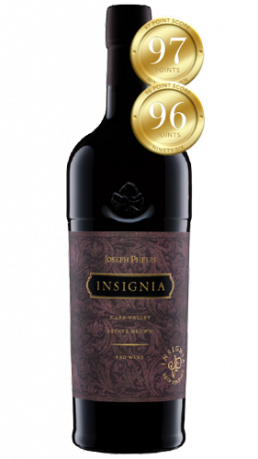
Joseph Phelps “Insignia” Napa Valley Cabernet Sauvignon 2017
“A beautiful, focused wine with a tight center palate of blackberries, blueberries, and dark chocolate. Very subtle. Hints of mint and sage, too. Medium to full body and fine, racy tannins. A reserved and very pretty Insignia. Fresh finish. Hard not to drink now, but better in 2022.”
96/100 points James Suckling
“The 2017 Insignia is beautiful stuff that excels in the vintage. Revealing a dense purple color as well as stunning notes of crème de cassis, lead pencil shavings, tobacco, and earth, it hits the palate with full-bodied richness, a silky, seamless texture, building tannins, and a great finish. It has the more linear, elegant style of the vintage, yet it’s balanced, has ample concentration, and is just a gorgeous wine that will evolve for 30 years or more.”
96/100 points – Jeb Dunnuck
COMING SOON!!!! The 2018 “Insignia”- 99 pts James Suckling; 98 pts Jeb Dunnuck; 97 pts Robert Parker’s Wine Advocate
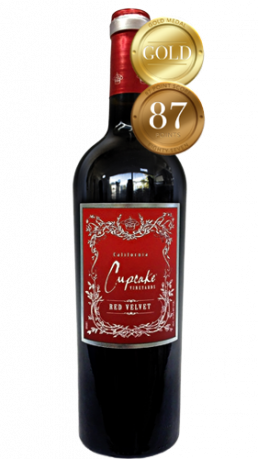
Finally, sweets time. It may seem counter-intuitive, but silky, velvety, and fruiti-licious wines can be chocolate’s best friend. And we love this combo of a rich red fruit forward blend with gooey dark chocolate brownies sprinkled with raspberries. Hmmmm!
Cupcake Red Velvet NV
A delightful blend of Zinfandel, Merlot, and Petite Sirah, sourced from the finest vineyards in California. “A very approachable style; the fragrant bouquet shows strawberry jam, raspberry, vanilla, cocoa, and cedar characters, leading to a supple palate that is fruity and smooth. The medium-full-bodied red is easy going with tasty flavours, finishing friendly and silky”
89 points – Sam Kim, Wine Orbit
HAPPY 4th JULY!
2020 Winery Update: Through the Smoke
2020 has been a tricky year for so many of us for so many different reasons. Big on our radar here at Dhall & Nash has been the devastating California wildfires that have been wreaking havoc on the state, and the Beirut explosion affecting our suppliers.
We’ve cultivated strong relationships with our producers, and thankfully, our wineries have come through the rubble and are beginning to see some light. A few have reached out to us to let us know how they’re faring, read ahead to hear it from the horses’ mouth.
The California Fires
Francis Ford Coppola:
“We are on our second round of fires in our area, the first ones in August that are finally almost out and the most recent ones that started last weekend. It isn’t even October. As wineries and homes are being damaged and destroyed we are grateful as our properties FFCW, FFCW Too!, Inglenook and Domaine de Broglie remain safe and unharmed at the moment. Our firefighters continue to amaze us as well as those that are flying in from other parts of the world to help us with this situation.
Currently, the Glass Fire, Shady Fire and Boysen Fire are all burning with no containment and are surrounding the Napa Valley and have made their way into Sonoma County. Our company has nearly 40 people evacuated from their homes and that changes by the announcements of warning and mandatory so it is being closely monitored. It is a scary situation, but thus far, our wineries are harvesting and operational and we couldn’t be more grateful.
I have found the easiest way to follow the news if you’re interested is to do so on Twitter. #GlassFire and check the latest tab at the top…there are tons of articles out there as well and they are trying to keep up with everything as it continues to transpire.”
Bogle Vineyards:
“The wildfires here in Northern California are once again making international news. While these fires now seem to be a yearly occurrence, the timing this season with the beginning of the 2020 harvest creates concern for both wine producers and wine drinkers alike.
…Please rest assured that we are far from harm’s way here on Merritt Island in the Sacramento River Delta. With the rich agricultural land here in the Delta clear of vulnerable trees and underbrush, we remain grateful that we are in an area that is not easily affected by fire.
While our estate acres in Clarksburg have stayed safe, we, like nearly every growing region in the state, have been impacted by smoky days. What is clear is that this vintage will need to be assessed carefully, to ensure that our wines continue to overdeliver in quality as they do each and every vintage.
“We’ve really been working hard on this,” says VP of Winemaking Eric Aafedt. “From studies done by the Australian Wine Research Institute to our local UC Davis, we are gathering as much data as we can about how these conditions affect the grapes.”
What we are learning is very encouraging.
“Studies show that the grapes most affected by smoke taint are the ones in closest proximity to fires,” says Chris Smith, Director of Winegrowing. “Our vineyards around the state are far enough from these fires that we expect little impact, although we do have one or two grower partners who are closer and who we will watch closely.”
That’s where the work of Eric and his team comes in. “With smoke, the damage is done mostly in the skins. We need to assess the grapes quickly to ascertain if there is an issue before allowing the juice to ferment on the skins,” says Eric. The winemaking team will be fermenting small samples of each lot of wine grapes even before they are harvested. “Any vineyards which show significant taint issues will not be brought into the winery,” says Chris Smith. “Quality remains our first priority, even if that means leaving a few of our fields unharvested.”
Once at the winery, that focus will continue. “All grape lots harvested this season will be carefully tracked throughout the process: measuring, monitoring and modifying vinification as necessary,” says Eric. Everyone here at Bogle is taking this vintage in stride. “I’m optimistic that we are not going to see negative effects from this kind of haze,” says Eric. “The 2020 Bogle wines will be as enjoyable as always.”
The Beirut Explosion
Chateau Marsyas:
The fires aren’t the only tragedy plaguing our beloved suppliers this year. Another that dominated headlines was the horrifying explosion in Beirut, Lebanon. We have a winery in Bekaa Valley, Lebanon – Chateau Marsyas (which makes some truly glorious drops), who were sadly quite affected by this, as their offices are located less than a kilometre away from the blast. You can read their post first-hand and watch a video on social channels here. Less than two weeks out from this devastating hit, they were in the middle of harvest, and the ‘HQ’ was set up in the hospital room where the owners’ father was recovering. Truly a feat of extraordinary resilience from these wondermakers! Bloomberg wrote a wonderful article on them shortly after the hit, and explain just how we can help – by drinking wine. Cathay Huyghe for Forbes magazine also spoke to Karim & Sandro Saadé – the owners, ‘The grapes don’t wait. We had harvest and at the same time we were at the hospital. We transformed [our father’s] hospital room into an operational room for the harvest.‘ You can read this article, “The Beirut Explosion, Twelve Weeks Later: A Closer Look At Its Continued Impact On Lebanon’s Wine Industry” by clicking here.
The Golden Trio: Virginia Dare
If ever a wine was to embody mystery and history it is Virginia Dare. If you’re anything like us (and we know you are) a good story behind a wine makes it all the more enthralling. You feel as though you’re drinking more than just a beverage.
Being only human, the more mysterious the story, the better! We are drawn to anything that alights the sense of curiosity lurking within all of us, which brings us to this winery’s namesake. Virginia Dare. As she appears on the label of this bold chardonnay, Virginia was the first English child born to the colonists of New England (America) in 1587. She was born into what is now a very well-known colony – The Lost Colony of Roanoke. For any of those who aren’t fans of American Horror Story, the Lost Colony of Roanoke is a mystery still unsolved today. It cemented itself in history when all 115 residents vanished, seemingly into thin air, with nothing but the word “Croatoan” carved into a wooden post as a clue to their disappearance. This disappearance was discovered when the governor of the Colony, John White, who was also Virginia Dare’s grandfather, returned from an overseas voyage to find his family and community gone.
Investigations heeded no results and even now, there is little more than speculation when it comes to the all important question – What happened to the colony of Roanoke? From this, of course, came legends and stories. People told tales of a young girl from the colony who had integrated into a nearby native American community, with light hair and a radiance about her that drew all those in her presence.. As she grew, she was beautiful in every sense of the word, and her reputation for kindness preceded her. She fell in love with a young warrior, which in the eyes of another young suitor, was simply unacceptable. The jealous young man was said to have dabbled in dark magic, and so he turned the young lady into a pure white doe, a beautiful creature whose fate was to be hunted by men for the remainder of her life. And she was. Tales spread of the elegance and sprightliness of the white doe and many hunters made it their life’s goal to claim her. Two men, in the end, were successful. One was her true love, who carried a charmed arrow which would return her to her human form. The other was a hunter, with an arrow that would end her life. Both arrows hit the doe at the same time, so the white doe returned to human form, albeit, as she lay dying. Before her death, she whispered her name. Virginia Dare.
It is said where Virginia died, the soil was soaked with blood. White grapes grew lush on this spot, but were stained red, and this is how red wine came to be in America. This grapevine is widely believed to be the 400-year old Mother Vine, reportedly the oldest cultivated grapevine in North America which still exists today – a clipping of which will soon be planted in Virginia Dare Winery’s estate vineyard.
And this brings us full circle, back to our Virginia Dare Chardonnay. The Virginia Dare winery, originally founded in 1835, once adorned the dinner tables of many a family, including the Coppolas. A young boy by the name of Francis Ford Coppola was entranced by ‘the pretty girl on the label’. Her image, coupled with the Virginia Dare song that played on the radio, made a lasting impact on the young child that would grow to become both a legend in filmmaking and a kingpin of Californian wine. Over the years the successful Virginia Dare Winery fell into disrepair. Francis Ford Coppola jumped at the opportunity to revive this winery that had left a lasting impression on him as a youngster. And who better to take it on than a storyteller extraordinaire, and a passionate wine aficionado?
The Virginia Dare Chardonnay comes in an embossed bottle with a label reminiscent of its heyday. This creamy Russian-river chardonnay is 100% barrel fermented and offers notes of apple, brioche and lemon with just a touch of honeycomb.
We are counting our lucky stars this year in the chardonnay department. It’s no secret that we are all avid fans of this voluptuous, versatile variety and represent a number of them that are simply delicious – from lean Chablis’ to quaffable Cali’s. Imagine our excitement when the opportunity arose for us to get in a bottle of the renowned Château Souverain Chardonnay. They do say good things come in threes, and in this case it really rang true. After seeing roaring success in New Zealand with Bogle Chardonnay, we were offered an offshoot from the Bogle brand, ‘Phantom’ Chardonnay – a good step up from everyone’s staple. And then Virginia Dare followed – a wine with so much history and mystery it’s impossible not to be captivated by it. The golden trio. 2019 is definitely the year of chardonnay!
If the world of wine were to hold a crown, chardonnay would certainly be the golden jewel at its centre.
Chardonnay holds the title for being one of the most widely planted grape varieties in the world. It is a direct descendant of the pinot noir variety (a little fun-fact not known by many.) It was a cross between the pinot noir grape and another ancient variety, the gouais blanc. But unlike the temperamental (albeit delicious,) pinot noir vines from which it came, chardonnay shows an extraordinary adaptability to thrive in almost every region and terroir where it’s cultivated.
Chardonnay had its humble beginnings in none other than Burgundy, and was quickly spread around all the French regions by the monks who tended the vineyards. But it was not the impressive speed of its growing popularity that to this very day makes this golden grape so famous. It was the wine it produced and still continues to produce. The most celebrated Crus in Burgundy, as well as the Blanc de Blancs in Champagne are made from chardonnay.
When the ‘new-world countries’ stepped up to bat, they took reference from the old-world gurus. What was the best made from? How were they doing it? And so, French grape varieties started to spread once more, including chardonnay.
Chardonnay saw nothing but success for centuries. It was the pinnacle of fine wine, with only one rather recent speedbump marring its good name. The ABC (“Anything but chardonnay,”) movement is one which took hold after yet another particularly booming decade in the 90’s. The extreme popularity of chardonnay meant many new-to-the-game producers wanted in on this trend. They started to turn out chardonnays that were heavily oaked in order to poorly mimic the qualities of Burgundy Crus. The oak wasn’t inherently bad, but it was heavily overused in many respects. And thus the ABC movement began – “Anything but chardonnay” were the words uttered by many a consumer for a number of years.
This movement of course, was but a blip for this variety. It takes a little more than a few years of naive over-oaking to permanently damage the glowing reputation it has spent so many years building. In 2016, the Wine and Spirit Trade Association found 32% of people had consumed chardonnay in the last month, making it the UK’s third most popular wine behind Pinot Grigio and Sauvignon Blanc (47%). Even the strictest ABC’er not yet willing to let go of the grudge against chardonnay can sometimes be found enjoying a sneaky Chablis every so often…
The chardonnay grapes produce elegant wines with aromas of acacia, hazelnut, almond, brioche and citrus fruit when the wine is young, but that isn’t to say the grape isn’t versatile. Quite the opposite, in fact it boasts a large variety of aromatic possibilities, different palate structures, acidity and body levels, but it almost always remains rich and complex, making this grape variety remarkably easy to pair.
With the spring coming, you will be able to enjoy your glass of chardonnay with all kinds of fish & seafood – to have it cooked or raw will be your only concern. The richness of chardonnay is particularly marvellous with lobster, crab or sushi for example. You could also relish this golden goodness with a large variety of white meats like chicken or pork (perfect for the barbeque…) but also with different cheeses because of its natural acidity.
So pour your glass and enjoy the New Zealand springtime with one of our chardonnays from the golden trio!

2015 Virginia Dare Chardonnay
“Floral in jasmine flowers, this wine aromatically could trick one into thinking it’s Sauvignon Blanc until more developed layers of anise, apple, lime and peach come to the fore. The backbone of supportive oak adds complexity.”
Wine Enthusiast (88 points)
Francis Ford Coppola: Flagship for the Stars
Francis Ford Coppola. A name wrought with associations, and etched into the history of classic film. Director of the famous Godfather trilogy - Coppola has been a household name for generations and has earned a reputation that garners immense respect today even some 45 years after the release of his mafia-drama flick.
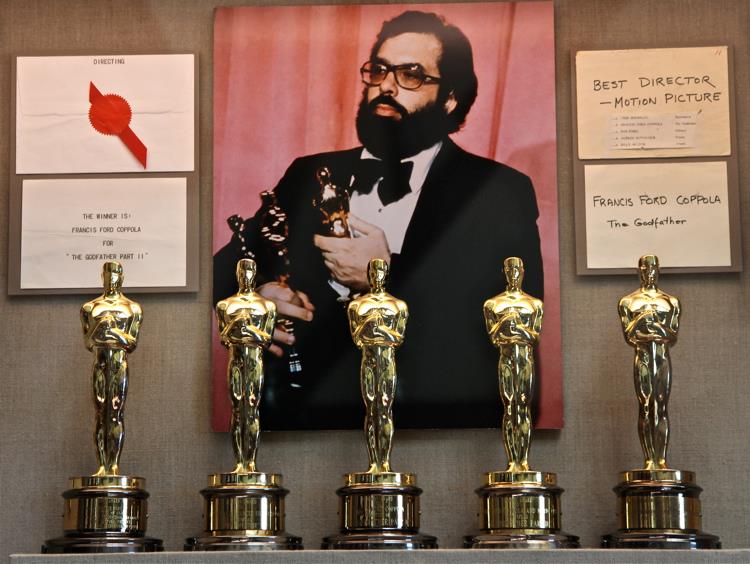
Coppola, however, has more ventures and talents than he could possibly contain to just the world of film. The Francis Ford Coppola franchise expands into what can only be called one of the most iconic wineries in California, and perhaps the world. Winemaking has been a Coppola family tradition for several generations. Agostino Coppola, Francis Coppola’s grandfather, used to make wine in the basement of his New York apartment building using concrete vats he constructed himself.
There are many different varieties, styles and even lines under the Francis Ford Coppola Winery umbrella - all of them worth writing home about - but one in particular, their flamboyant flagship wine, is something just a bit special.
The Archimedes. A powerful and enchanting Cabernet Sauvignon made to honour creativity and innovation. The discoveries of the Greek mathematician Archimedes millennia ago changed the way the world perceived physics, even to this day. Francis Coppola’s grandfather Agostino - the man who so dutifully made wines for his closest family and friends and ultimately nurtured a sense of admiration for wine in Francis - so greatly admired the intellect and ingenuity of the mathematician that he gave his first son the same name. In honor of his Uncle Archimedes, Francis Ford Coppola named the release of his flagship wine for him. Archimedes.
“Archimedes was inspired by the accomplishments of great men. As one of our finest achievements, this wine represents our passionate dedication to the craft of great wine making and honors of a memory of a dear Coppola family member. We hope that when you open this bottle, you too will find your inspiration.”
- Francis Ford Coppola
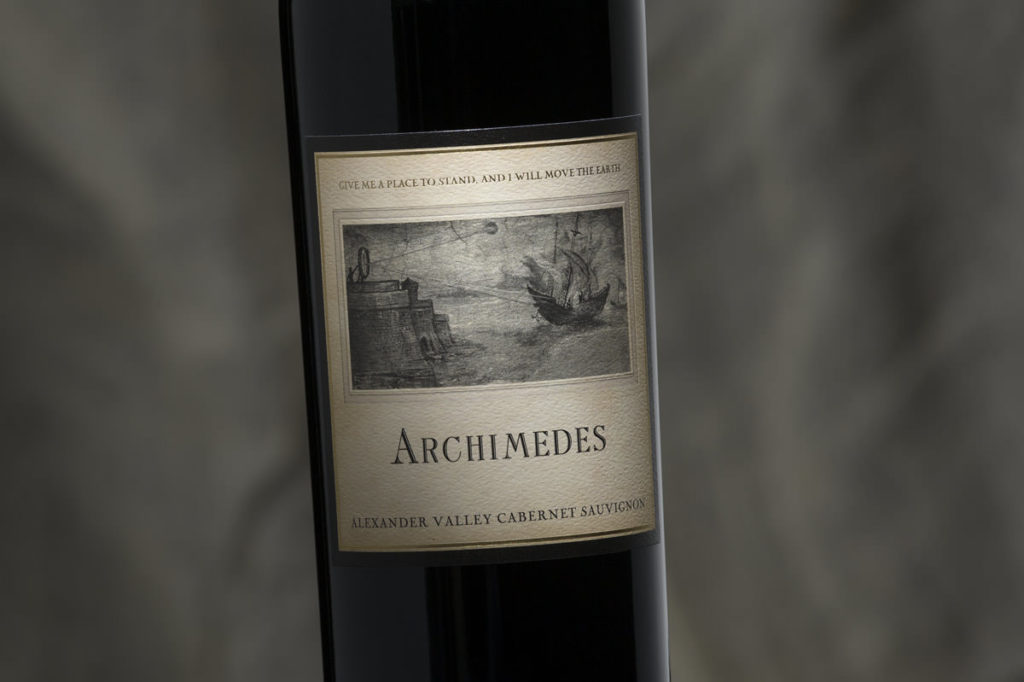
The Archimedes is not short of praise either, and in fact it has graced the lips of all our favourite stars. Alongside wines from various other top-shelf Coppola ranges, the Archimedes 2014 was served at the 90th Annual Academy Awards, better known as the 2018 Oscars, as well as the ‘Governors Ball’, the official post-Oscars celebration. With more tricks up his sleeve, Francis Ford Coppola was certainly the go-to for the awards season, and for the second year running as well, were honoured with being named the exclusive wine sponsor for the Sundance Film Festival.
And just to whet your appetite, and perhaps light a culinary spark of inspiration, The Governors Ball saw the Archimedes served with some mind-blowing treats fit for even the most discerning palates. 100 pounds of scallops, 400 pizzas, 250 Main lobsters, 6,500 wood-fired flatbreads, 300 pounds of Miyazaki Wagyu beef, 1,000 hibiscus flowers, 7,000 mini chocolate oscars and 15 kg of caviar (credit: Decanter) were on hand to match the flavours of Coppola’s luxurious Californian blends.
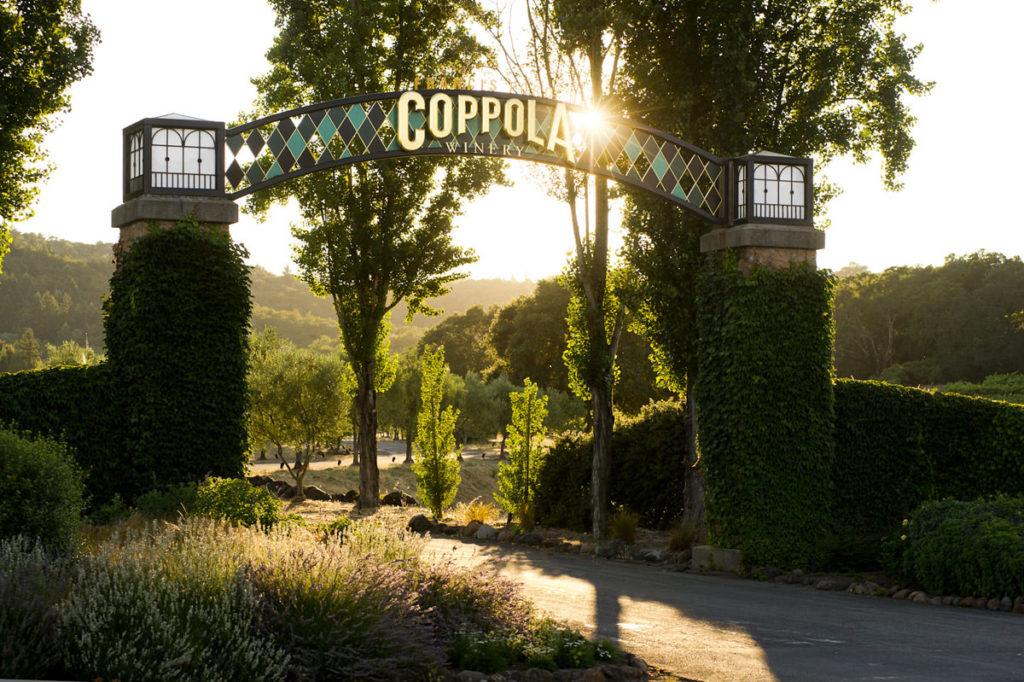
Whilst we at Dhall & Nash are avid supporters of the entire Coppola range - from his quaffable, everyday table wines in the ‘Rosso & Bianco’ range, to his complex, bold and eye-catching top shelf tipples in the coveted ‘Director’s Cut’ range - Archimedes is one that we can’t help but hold a special level of admiration for. A lone wolf in his ‘branch’ of an otherwise extensive franchise, the Archimedes commands respect whilst remaining poised and modest. What is there not to love? Coppola has truly given the world an offer they can’t refuse.
2014 Francis Ford Coppola Archimedes
“...pronounced cassis, crushed blueberries and cedar notes with hints of bay leaves, eucalyptus and chocolate box. Medium-bodied, the palate leads with a firm structure of chewy tannins and just enough acidity, supporting tightly wound, muscular fruit and finishing taut yet promising.”
Robert Parker's Wine Advocate (92 points)
#10 : 2016 Francis Ford Coppola 'Sofia' Rosé
#10 2016 Francis Ford Coppola 'Sofia' Rosé: Sofia Rosé is a wine of unparalleled beauty. From its shapely, stylized bottle to its delicate fruity essence, this is a wine like no other. Born from a celebration of love, Sofia wines began as a gift from a father to his daughter. The charming and stylish Sofia Rosé is a tribute to the romantic, ebullient spirit of women everywhere.
Feminine and stylish, with a fragrant perfume of fresh strawberries and lavender, this rosé explodes with ripe, juicy flavours of cherry, raspberry and citrus zest. This refreshing wine is reminiscent of the popular dry rosés served in seaside café along the French Riviera. It’s crisp, delicate, and elegantly fruity with just a kiss of spice on the finish.
They typically harvest the grapes for our Sofia Rosé at a lower Brix to ensure we get a light wine that pairs elegantly with food. For colour extractions, the grapes are cold-soaked for 48 hours before the juice is separated from the skins.
